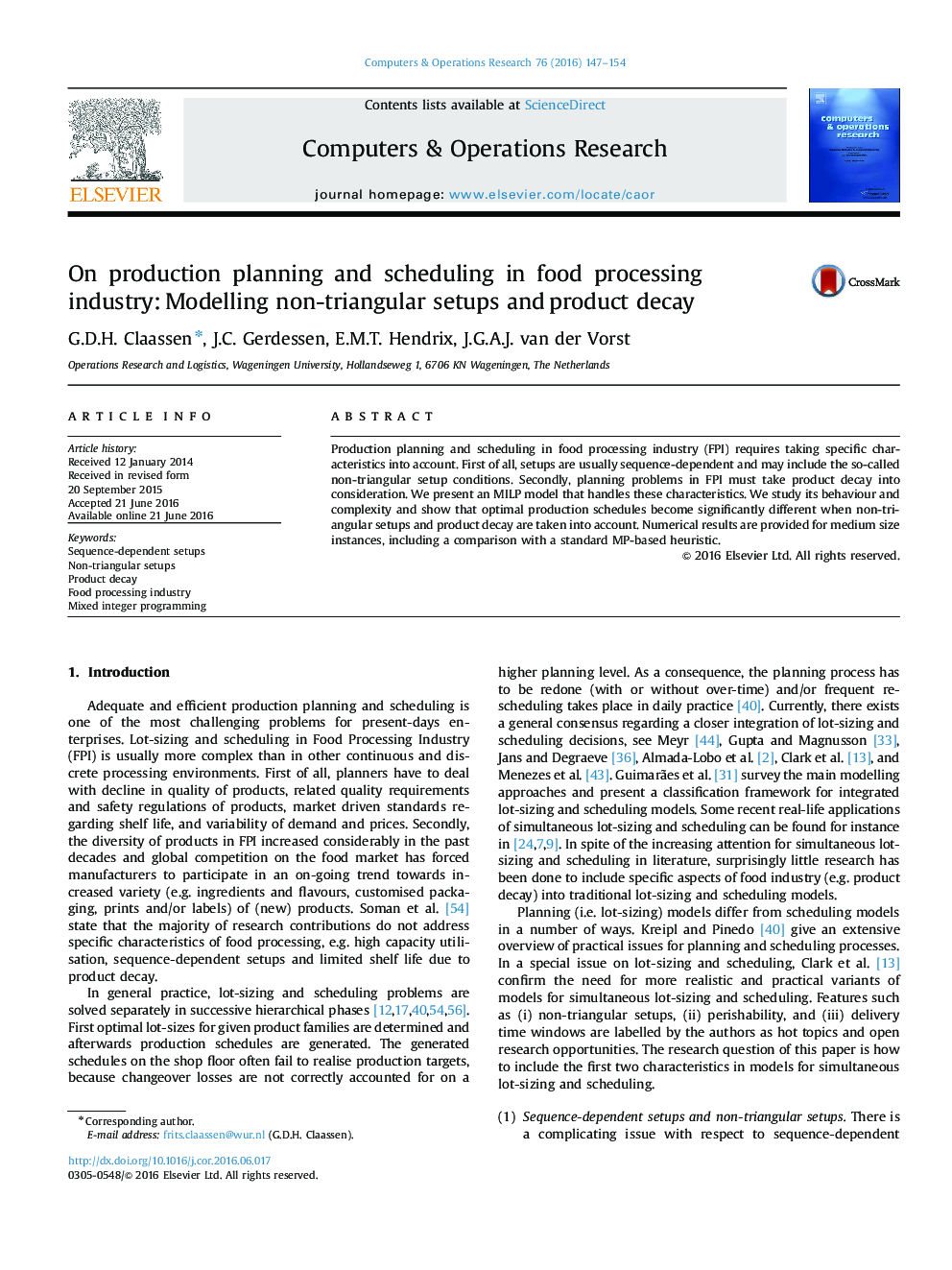| Article ID | Journal | Published Year | Pages | File Type |
|---|---|---|---|---|
| 474570 | Computers & Operations Research | 2016 | 8 Pages |
•The study focusses on simultaneous lot-sizing and scheduling for food processing industry.•Surprisingly little research has been devoted to include issues of perishability.•A trend exists in which (hybrid) Big Bucket (BB) models are preferred to Small Bucket (SB) models.•Non-triangular setups are hardly considered, particularly not in SB models.•Using BB models and its (hybrid) variants can easily disrupt the main principle of optimality in lot-sizing.
Production planning and scheduling in food processing industry (FPI) requires taking specific characteristics into account. First of all, setups are usually sequence-dependent and may include the so-called non-triangular setup conditions. Secondly, planning problems in FPI must take product decay into consideration. We present an MILP model that handles these characteristics. We study its behaviour and complexity and show that optimal production schedules become significantly different when non-triangular setups and product decay are taken into account. Numerical results are provided for medium size instances, including a comparison with a standard MP-based heuristic.
